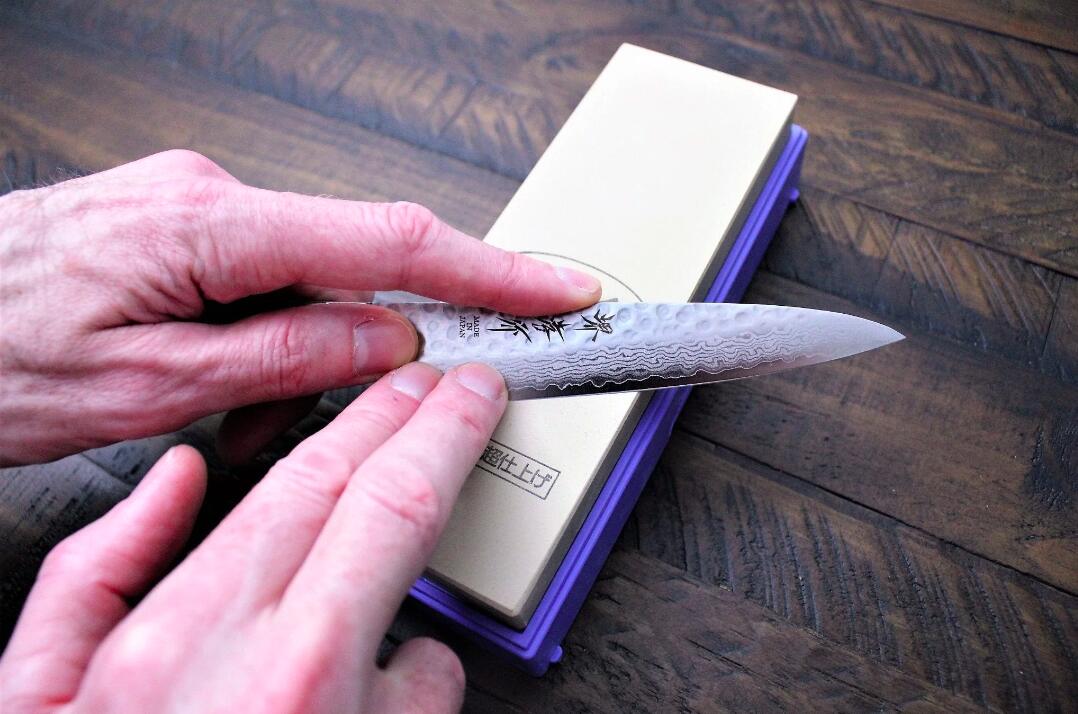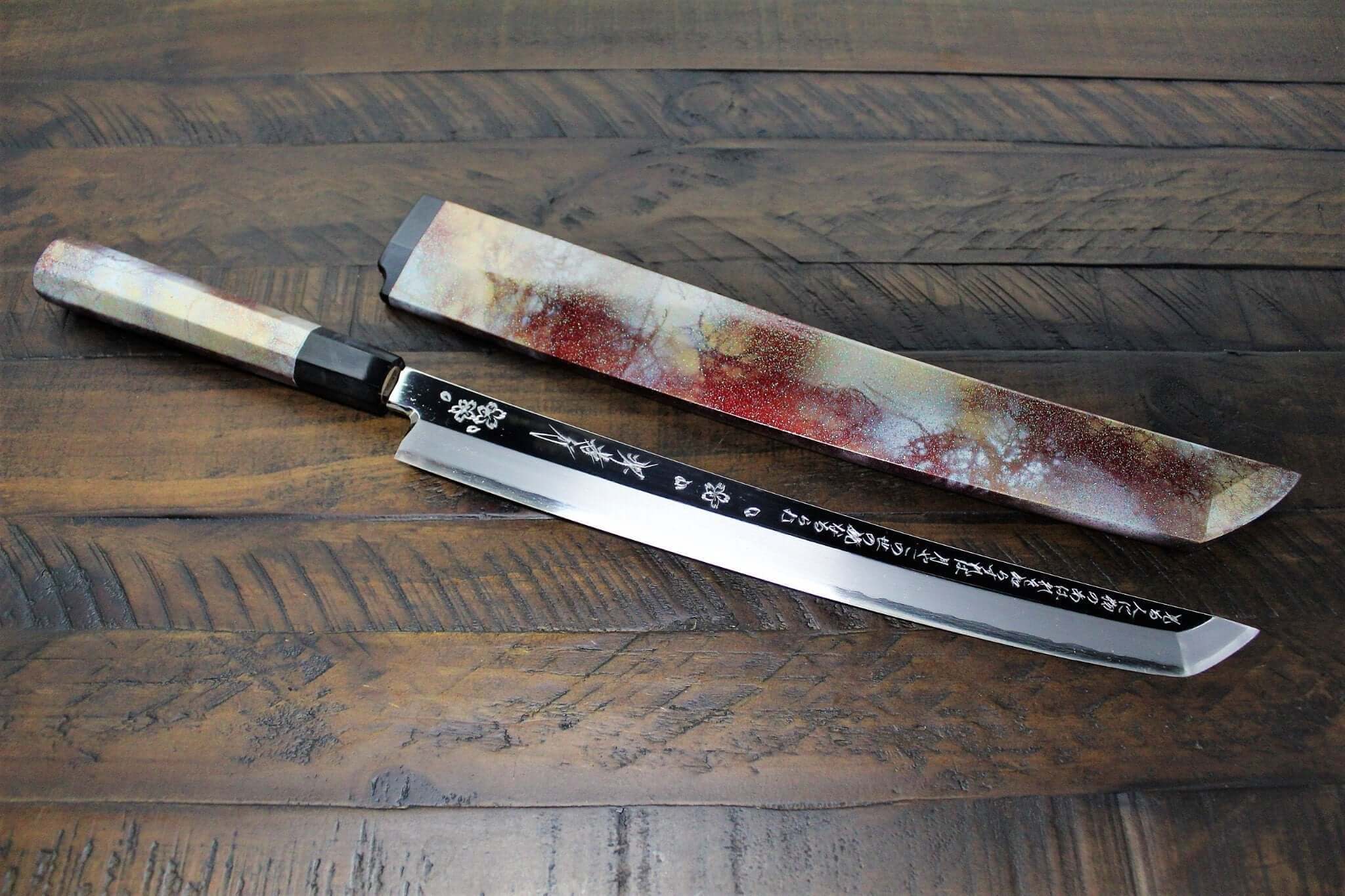
The Traditional Craftsmanship of Japanese Kitchen Knives
Japanese cooking knives have the reputation of being some of the best in the industry, and if you’ve ever wondered why, you’ve come to the right place. For starters, Japanese knife making is a fine art mastered only by a handful of individuals, and this is because the knives are made to exact and high standards. To be sure, most knives on the market fail to live up to the quality and performance of a true Japanese kitchen knife, and once you purchase one, you’ll never again wonder what makes them so unique. Let’s jump into what makes them so special.
Japanese knives come in many different types, including both single and double-bevel blades. Double-bevel knives, also known as Western-style knives, have a V-shaped blade and are perfect for cutting large veggies and meats, and they are a staple in the Japanese knife industry. In fact, one of the things that makes Japanese knives so unique is that there is a design out there to accommodate all chefs’ needs, particularly when delving into the world of single-bevel Japanese knives, including both amateur and professional chefs.
When manufacturers are forging Japanese knives, they usually have a particular purpose in mind and will make the knife accordingly. This is because Japanese knife making is not just a way to make a great knife — it is also a very important part of Japanese culture. Expert traditional Japanese craftsmanship has been handed down from generation to generation for more than 600 years, which is also one of the reasons the knives are considered the best in the world.
Some History of the Japanese Knife

Japanese knives are among the highest quality knives available, and this is attested by the long, mostly unchanged process of making Japanese knives. In fact, the history of Japanese knives begins with the traditional Japanese craftsmanship of sword making, which was developed over centuries. A number of regions within Japan have been making swords and knives for over 1,000 years.
Throughout this storied history of forging Japanese knives and swords, blacksmiths honed their ability to forge incredibly high-quality steel. It is this expert forging of Japanese steel that has made Japanese knives so renowned.
In Sakai, Osaka, bladesmiths further perfected the making of Japanese knives over the span of 600 years. They developed such high levels of expertise and precision that the process was broken down into its component parts: blacksmithing, sharpening, polishing, and handling installation.
Most Japanese knives are partial tang, which means the metal of the knife only goes partially through the handle. This makes for a much lighter weight knife and more of a forward weighting than Western-style full tang knives. While it does take a little getting used to for people used to full-tang knives, many people who try them out fall in love with them very quickly.
True traditional Japanese craftsmanship almost always includes partial-tang handles made out of a sturdy type of wood. Indeed, when it comes to Japanese knife making, the partial-tang is pretty much standard. Because of the popularity of Japanese knives, some manufacturers also make a “Western” style handle that consists of metal rivets to attach it to the blade, which the Japanese style handles don’t have.

Lighter but Stronger
Japanese knives are lightweight and therefore easy to work with, which is why so many chefs prefer them over Western knives. Japanese knives have a slightly more forward-weighted feel and allow you to cut, slice, and dice more smoothly than other knives when using a pinch grip. As soon as you hold the knife in your hand, you’ll recognize the difference between Japanese knives and all the others. To top it all off, the Japanese are masters at creating very attractive knives that can easily add a little pizzazz to your kitchen.
A Legacy of Handmade Products
Japanese knife making is a tradition that is still taken very seriously today. Roughly 80% of the knives manufactured and sold in Japan are still made by hand in Sakai, where they are either handmade or hand-forged so that the tradition of high-quality knives is not forgotten. Japan has available 150-200 different types of knives used for culinary purposes.
Some of the different Japanese knives include petty, Gyuto, Nakiri, Santoku, and Kiritsuke knives, among others. When it comes to traditional Japanese craftsmanship, you’ll never lack for a knife that will serve its purpose regardless of what you’re planning to do with it.
Do Japanese Knives Last Forever?
Because of today’s techniques used in Japanese knife making, if you take proper care of your Japanese chef knives, it is possible to keep them and use them forever, or at least for many decades. Below are some tips to follow to take excellent care of your Japanese knives:
- Remember that the steel used is not necessarily rust-resistant, so make sure you wash and dry the knife off completely after each use
- Never put a Japanese knife of any type in your dishwasher
- Add some oil, such as camellia oil, occasionally to the blade in order to keep it in good condition
- Never use the knife to cut frozen foods or very hard foods because it could break the blade
- Always use a wooden cutting board with your knife — never a surface made out of glass or metal because this can cause the blades to wear out faster
It isn’t difficult to take good care of your Japanese knives. In fact, once you get into the habit of doing these things, you’ll realize it isn’t that difficult or time-consuming. That being said, it is still important to take excellent care of these knives because if you do, it is possible for them to last for a lifetime and provide you with quality cutting the entire time.
Conclusion
Japanese knife making is a time-honored tradition and results in some of the best knives on the planet. The art of making and forging Japanese knives hasn’t changed much in the past 600 years, but why mess with perfection? Hasu-Seizo has all types of high-quality Japanese knives that can be used in many different ways. Visit us online at any time or contact us if you have specific questions regarding any of our products.


